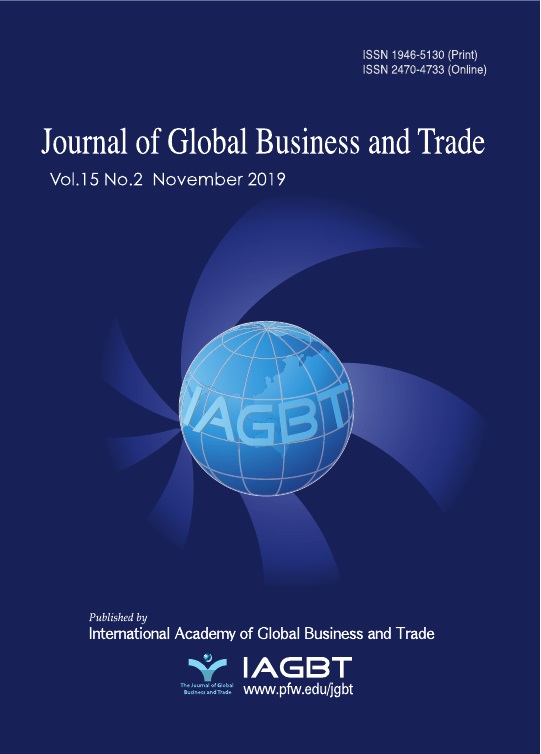- 영문명
- 발행기관
- The International Academy of Global Business and Trade
- 저자명
- Roberto C. Valenzuela III Maria Luisa G. Valera
- 간행물 정보
- 『Journal of Global Business and Trade』Vol. 15, No. 2, 1~9쪽, 전체 9쪽
- 주제분류
- 사회과학 > 무역학
- 파일형태
- 발행일자
- 2019.11.30
4,000원
구매일시로부터 72시간 이내에 다운로드 가능합니다.
이 학술논문 정보는 (주)교보문고와 각 발행기관 사이에 저작물 이용 계약이 체결된 것으로, 교보문고를 통해 제공되고 있습니다.

국문 초록
영문 초록
Purpose – A treasury bill (T-bill) is the safest money market instrument issued by the Philippine government
and matures in a year or less than a year. This paper identified and analyzed the factors that affect the
movement of the T-bill rate in the Philippines.
Design/Methodology/Approach – An Ordinary Least Squares (OLS) technique was applied in this study
using time-series data from 1971 to 2015. The process of forward splicing was used to complete the data of
Consumer Price Index (CPI). Splicing is defined as the process of combining two or more index numbers of
different bases into a continuous series of index numbers of a common base. There are two types of splicing:
backward and forward splicing. In this study, only forward splicing was used because of missing data in recent
years. To see if there was a structural break in the model caused by external shock (financial crisis), the model
was tested for a structural stability test: specifically, the Chow Test.
Findings - Based on the result, having low economic growth, low expected foreign returns, and high inflation
would result in a high T-bill rate. Any major financial crisis can also influence the T-bill rate positively due to
the influx of investors who would want to secure a safe investment. Furthermore, investors would be risk
averse by investing in T-bills if the performance of the economy is sluggish and the expected foreign return is
low. Thus, the T-bill rate serves as an investors’ guide on when they would take a riskier investment or a safer
investment.
Research Implications – Most studies related to this topic focused only on the use of real gross domestic
product, real money supply, and expected foreign returns as factors affecting the Treasury Bill Rate. Adding
two other variables in the model, inflation as well as financial crisis, and testing it for structural break,
multicollinearity, and autocorrelation were the added value of this paper. Such tests are crucial for unbiased
regression results that will affect the policy implications if not addressed properly.
목차
Ⅰ. Introduction
Ⅱ. Literature Review
Ⅲ. Methodology
Ⅳ. Results and Discussion
V. Conclusion
키워드
해당간행물 수록 논문
- Comparative Palm Oil Trade Performance in Indonesia, Malaysia, and the Philippines
- Determinants of Treasury Bill Rates in the Philippines
- Good Aquaculture Practices Adoption and Certification of Shrimp Aquaculture Farms in Bulacan, Philippines : Status, Issues and Prospects
- Trade Performance via Infrastructure Investment: Evidence from Synergies among the Belt Road Initiative (BRI) and UN Sustainable Development Goals (SDGs)
참고문헌
관련논문
사회과학 > 무역학분야 BEST
더보기사회과학 > 무역학분야 NEW
- E-Commerce 배송서비스품질 요구도 분석에 관한 연구
- 소셜 라이브 스트리밍 이용자의 트렌드 혁신성과 사회비교 특성이 라이브 커머스 구매의도에 미치는 영향: 라이브 혜택 지각의 매개효과를 중심으로
- 웹케어의 접근 방식(tone of voice)이 서비스 실패 시 소비자의 관용에 미치는 영향
최근 이용한 논문
교보eBook 첫 방문을 환영 합니다!

신규가입 혜택 지급이 완료 되었습니다.
바로 사용 가능한 교보e캐시 1,000원 (유효기간 7일)
지금 바로 교보eBook의 다양한 콘텐츠를 이용해 보세요!



